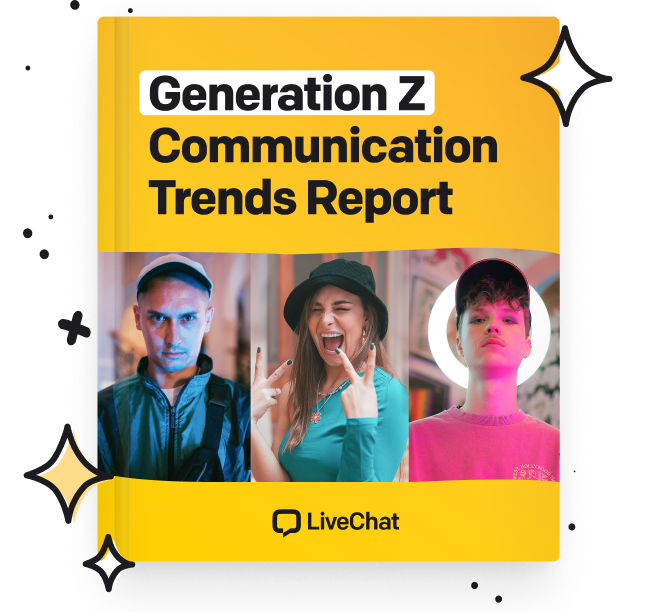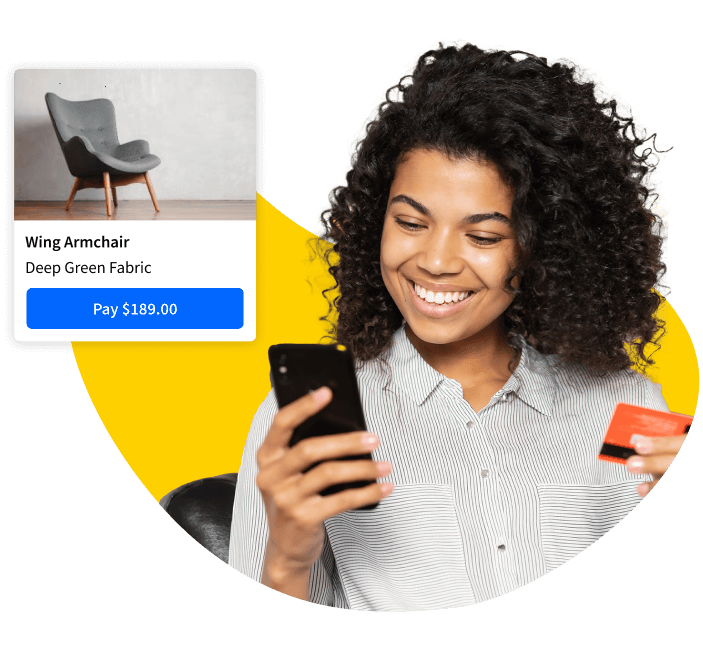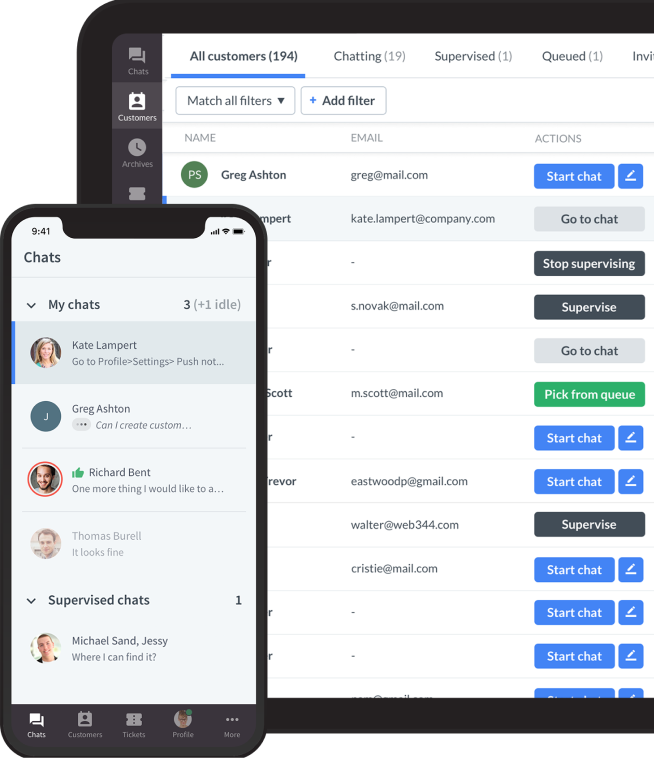Showing top 0 results 0 results found
Showing top 0 results 0 results found

Every business starts with a simple goal: to meet customer needs.
Whether selling a product or offering a service, the ultimate goal is to provide something your customers want and need. But as competition grows and customer expectations change, understanding those needs becomes increasingly complex. That's where identifying and meeting them can make all the difference.
Let's explore the benefits of understanding customer needs. From reviewing recurring customer questions to a customer needs analysis conducting social listening, and analyzing data, we'll provide the tools and methods you need to uncover what your customers truly want.
The benefits of identifying and understanding customer needs
Imagine you're running a small bakery in your hometown. Your loyal customers come in every week for your delicious bread and pastries. You've always known that they love the quality of your products, but have you ever stopped to think about why they keep coming back? Is it the price, the location, or something else entirely?
Understanding your customer's needs is the key to answering these questions and unlocking the true potential of your business.
Boosting brand loyalty
Brand loyalty is the holy grail of any business. It keeps customers repeatedly returning, setting you apart from your competitors.
But how do you cultivate brand loyalty?
When you take the time to understand your customers' needs and preferences, you can tailor your products and services to meet those needs. This creates a more personalized customer experience, increasing satisfaction and loyalty. It's like having a personal shopper who always knows exactly what you want!
You can build a solid lasting relationship with your customers by consistently meeting their needs. They'll trust your brand and be more likely to recommend your products or services to others.
Creating more customized marketing campaigns
Marketing campaigns are a great way to get your brand in front of your target audience. But your campaigns must be customized to your audience's needs and preferences to succeed.
By identifying the types of customer needs first, you can learn the following:
- Their goals and pain points will help you determine what to focus on in your messaging so your target clients can relate to you.
- What communication style appeals to them, so you can choose a style that reflects how they communicate.
- What values and beliefs they represent so that you can adjust your offer. For example, if you find out that your customers care about the environment, you can use your biodegradable boxes for packaging their orders.
- What communication platforms do they prefer, such as email, social media, or live chat.
One example of an excellent marketing campaign deeply vested in meeting customer needs is Dove's "Real Beauty" campaign. The campaign was launched in 2004 and aimed to redefine beauty standards by celebrating the natural beauty of everyday women.
Dove conducted a study that revealed that only 2% of women worldwide considered themselves beautiful. The brand recognized this as a universal problem and launched the "Real Beauty" campaign to address it. It included a series of ads featuring real women of all ages, shapes, and sizes, with the tagline "Real beauty comes in all shapes and sizes."
The campaign resonated with women worldwide and was a huge success. It received widespread media coverage and generated a lot of positive buzz on social media. Dove's focus on the needs and insecurities of its target audience created a strong emotional connection with its customers and helped to build brand loyalty.
The result?
Dove sales grew from $2 billion to $4 billion in three years. This was only possible with prior research on the target group.
But let's go even further.
Improved sales: understanding the importance of customer feedback
You should conduct market research and analyze customer feedback to gain valuable insights into what your customers seek and value most. This information allows you to tailor your products and services to fulfill your customers' needs.
When you meet their needs and exceed their expectations, you create a loyal customer base that is more likely to return and recommend your products or services to others.
But it’s not only about that. It's also about anticipating their needs and providing solutions before they know they need them.
So, to improve your sales, start by conducting market research and analyzing customer feedback.
How to identify customer needs
You walk into a store looking for a specific product or service, and a friendly salesperson greets you and asks how they can help. You explain what you're looking for, and the salesperson takes you to the product, even offering helpful tips and recommendations.
Satisfied, you leave the store happy with your purchase and the customer service you received. As a business owner or customer service professional, it's crucial to understand your customers' needs to provide excellent customer service and create positive experiences like the second scenario.
How can we identify our customers' needs to make them happy?
#1 Review the most recurring questions from customers
One of the easiest ways to identify your customers' needs is by reviewing their most recurring questions. This method is advantageous in identifying common customer pain points and areas where your clients might be experiencing frustration.
How do you go about reviewing these questions?
Start by finding the most frequently asked questions in customer interactions, whether through phone calls, emails, or chats. Look for patterns in these questions and try to categorize them thematically. Once you've identified these patterns, you can address these issues proactively through an FAQ section on your website or by training your customer support team to address them before they become problems.By taking this approach, you can provide excellent customer service and create a positive experience for your customers, which can go a long way in building customer loyalty.
#2 Run customer satisfaction surveys
How do you go about running customer satisfaction surveys?
There are three metrics you should take a look at:
- Net Promoter Score (NPS),
- Customer Satisfaction (CSAT),
- Customer Effort Score (CES).
The first metric lets you assess customer loyalty and calculate the proportions between those who love and hate your brand. The second focuses on measuring client satisfaction levels, while the latter checks how easy it is to complete any selected process (payment).
You can run these and other surveys easily through live chat or chatbot software if you use these tools to communicate with your customers.
Here’s a great example:
Also, here's one more tip from our experience: Make sure to add qualitative follow-up questions to your surveys. If you get a low score, ask an open-ended question about improving the CX. Respectively, regarding high scores, ask about the exact features that work in your favor. You can use your findings to distinguish yourself from your competitors further.
#3 Conduct social listening
Monitoring your social media accounts and keeping an ear to the ground can bring valuable insights into what your customers say about your business and what they want from you.
This process is known as social listening, and it involves monitoring social media channels for mentions of your business, your competitors, and your industry.
One of the benefits of social listening is that it can help you identify your most loyal customers. These are the customers who are actively engaging with your product features or brand and sharing positive feedback.
To conduct social listening, you must use the right tools (like Google Alerts) to monitor social media channels and identify relevant keywords and hashtags.
#4 Run competition research
Last but not least, understand your competition. It is a crucial part of meeting your customers' needs. You can identify market gaps and better understand what your customers seek by conducting thorough research on your competitors.
First, identify your top competitors and analyze their marketing strategies, product offerings, and customer engagement. In customer focus groups, look for ways your competitors meet your customers' needs and identify areas where you may need to catch up.
Another important aspect of competition research is keeping an eye on emerging trends and changes in the market. By staying up-to-date on the latest industry news and innovations, you can position your business as a leader in meeting your customers' evolving needs.

How to conduct a customer needs analysis
Once you’ve collected the data, it’s time to begin your analysis.
#1. Categorize your findings thematically
As you collect user insights, you’ll probably notice that they relate to tens (if not hundreds) of random topics. This means one thing - before conducting your customer needs analysis, you must sort them into batches.
Depending on your product or service, you might find it helpful to divide your data into any of the following groups:
- Pricing (customers mentioning your prices are too high, questions about discounts, custom plans, etc.)
- Features (applicable if your product offers several features)
- Quality (How does it compare to other similar solutions? If you offer a physical item, what is its durability? Do customers report any errors?)
- Customer experience (feedback about your website or app’s UX, sales team, or customer support interactions).
Remember to collect insights for all stages in the sales cycle, including after-purchase support.
#2. Conduct a means-end analysis
Ensure you follow a “means-end customer needs analysis” approach to determine why people buy your product. If this is the first time you’ve heard of this, it’s built around three areas:
- Features - the features that trigger the person to purchase a product/service, etc.
- Benefits - the benefits (or the consequences) of the above-mentioned features, etc. These can be personal (how the features make your customers feel) or functional.
- Value - what the result of buying your product is, etc.
Don't worry if this sounds a bit confusing!
Here's a great example of a means-end analysis from market insights consultancy Rockbridge. The scenario below shows what drives car dealership customers to buy an SUV over a standard minivan.
#3. Visualize your findings
You're already halfway there if you collected your insights and made sense of them! You should now share the data with relevant teams to open a discussion on better catering to customer needs.
To make it a little easier for all stakeholders to understand your findings, it’s worth visualizing your data, and Miro is a tool that can help you with that. Not only can you quickly turn your insights into graphics, but you can also easily share them with your team or invite others to contribute.
Below is an example of a user persona created in Miro to give you a sense of what you’re in for.

#4. Put your findings into action
Finally, the last step of your customer needs analysis is putting your findings into action!
Create an action plan that includes Key Performance Indicators (KPIs), Objectives and Key Results (OKRs), and ideas for improvement, along with a list of people responsible for the delivery of your objectives.
For instance, if during your research, you identify that customers often complain about a missing feature that would make customer segmentation easier, then you can include it in your product roadmap with a strict deadline. Regularly review your action plan and hold people responsible for achieving your goals.
Examples of companies that keep loyal customers
Let's look at a few companies that know how to care for their customers. This will help us to visualize what good customer service should look like.
Slack
One way Slack ensures that it meets its customers' needs is by regularly conducting customer surveys. These surveys provide valuable insights into how users use the platform and what features they want to be added. Slack also has a customer support team available 24/7 to help users with questions or issues.
By taking the time to listen to its users and understand their needs, Slack has created a product that truly meets the needs of its target audience. This has resulted in a highly engaged and loyal user base that has helped propel the company's growth.
LiveChat
At LiveChat, we are dedicated to serving our customers and delivering on our promises.
Our commitment to exceptional customer service starts with providing round-the-clock support through a combination of resources, including our live chat and chatbot. But that's not all - our help center addresses common questions and offers valuable inspiration and ideas.
Our willingness to say "yes" to our customers sets us apart. To be genuinely customer-focused, we must be flexible. To stay true to our word, we develop short-term and long-term plans for each client. This involves understanding their goals for each quarter and any upcoming milestones.
For example, if we learn that a client plans to hire more customer support staff and will need additional seats in their subscription plan, we can offer them custom pricing or a special deal in advance.
Netflix
Netflix's strong focus on its customers is evident in the continuous growth of its subscriber base since 2013.
By gathering critical in-app data, Netflix can provide tailored suggestions for shows and movies to each customer, which has been a remarkably successful strategy. Their recommendations are so spot on that it's no surprise we spend an average of 3.2 hours daily on Netflix. We can all admit to being guilty of binge-watching.

The power of understanding your customers
Let's put it in a way that will make you sit up and take notice. The key takeaway from this article is that knowing and understanding your customer's needs is crucial for businesses.
And why is that? Simply put, it's because your customers are the lifeblood of your business! Without them, you'd have no sales, no revenue, and no business to run.
But identifying your customers' needs isn't just crucial for your bottom line. It also shows that you care about your customers and value their input. You can create products and services that meet and exceed their expectations. And that's how you build a loyal customer base that will stick with you through thick and thin.
So, if you're a business owner, it's time to take action. Use surveys, focus groups, and social media analytics to gather insights into your customers' wants. And then use that information to improve your products, services, and overall customer experience.
Trust us; it'll pay off in the long run!
Get a glimpse into the future of business communication with digital natives.
Get the FREE report








Comments